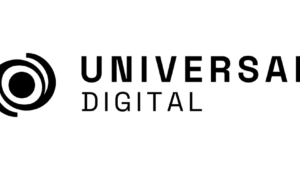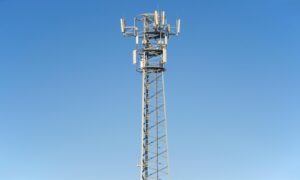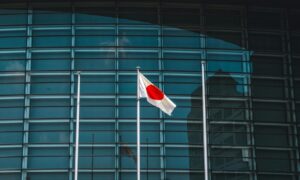The medical device industry is a highly regulated sector worldwide, and Japan is no exception. To bring a medical device to market in Japan, companies must navigate the complex regulatory landscape and obtain approval from the Pharmaceuticals and Medical Devices Agency (PMDA) or a Registered Certification Body (RCB). This blog post will provide a comprehensive guide to the PMDA and RCB approval process, focusing on the steps necessary to register a medical device in Japan.
The PMDA Approval Process
Before a medical device can be granted approval in Japan, a RCB or the PMDA conducts a rigorous pre-market evaluation. This process involves assessing the quality, safety, and efficacy of the device to ensure that it meets the necessary standards. The Marketing Authorization Holder (MAH) plays a vital role in this process, as they are responsible for submitting the required documentation to support their application.
Following medical device approval in Japan, the RCB or PMDA continues to monitor the device’s safety and performance through post-market surveillance. This includes investigating adverse events and ensuring that any necessary corrective actions are taken. Marketing Authorization Holders are required to submit regular reports to the RCB or PMDA detailing the safety and efficacy of their devices, as well as any updates to the device’s design or manufacturing process.
Registering Medical Devices in Japan: Step-by-Step Guide
There are several steps involved in the medical device registration process in Japan. Each is essential to gaining approval from the PMDA, so it is important to understand them.
Classification of Medical Devices
The first step in registering a medical device in Japan is determining its classification. Japanese medical device approvals are divided into four classes based on their potential risk to patients:
- Class I: General Medical Devices – These devices pose the lowest risk and include items such as bandages and surgical gloves.
- Class II: Controlled Medical Devices – Class II devices have a moderate level of risk and consist of products like infusion pumps and diagnostic imaging equipment.
- Class III: Specially Controlled Medical Devices – They pose a moderate to high level of risk and involve products such as implantable pacemakers and artificial joints.
- Class IV: Highly controlled – They pose the highest level of risk and involve products such as neuro catheters and heart transplant devices.
Each class has its own set of regulatory requirements, so it is essential to accurately determine the appropriate classification for your device.
Preparing The Necessary Documents
Once you have determined the classification of your medical device, the next step is to compile the necessary documentation for your application. Key documents include:
- Technical Documentation – This encompasses all the technical information about your device, including design specifications, manufacturing processes, and clinical evaluation data. The level of detail required will depend on the classification of your device.
- Quality Management System (QMS) Certification – The PMDA requires all medical device manufacturers to implement a QMS that complies with the Japanese standard, Ministerial Ordinance No. 169. Manufacturers must obtain QMS certification before submitting their application. QMS certification needs to be renewed every 5 years.
- Foreign Manufacturer Registration (FMR) – This is a licensing process outlining which facilities need to be accredited.
Submitting The Application
With your documentation in order, you can now submit your application for medical device approval in Japan. This process involves completing the appropriate application forms, submitting your technical documents, submitting an application for QMS and FMR, and paying the required fees. Payment options include wire transfer, credit card, or bank draft.
PMDA Review and Evaluation
Following the submission of your application, the RCB or PMDA will review your documentation and evaluate your device’s quality, safety, and efficacy. The duration of this process varies depending on the complexity and risk of your device and the completeness of your documentation. However, you can generally expect the review process to take several months to several years depending on the classification of the device.
During the evaluation process, the RCB or PMDA may have questions or require additional information. It is crucial to promptly respond to any inquiries to avoid delays in the approval process.
Addressing Deficiencies And Resubmission
If the PMDA identifies deficiencies in your application, you will be given an opportunity to address these issues and resubmit your documentation. The timeframe for resubmission depends on the nature of the deficiencies, but it is essential to act quickly to minimize delays in the approval process. Thoroughly review the PMDA’s feedback, make the necessary changes to your documentation, and provide a detailed response to each concern raised.
Approval And Market Entry
Once the RCB or PMDA is satisfied with your application and has determined that your device meets the necessary quality, safety, and efficacy requirements, you will be granted registration approval to market your medical device in Japan. You will receive an approval certificate, which serves as official documentation of your device’s compliance with Japanese regulations.
Following approval, it is essential to remain vigilant in maintaining the quality and safety of your device, as well as fulfilling your post-approval reporting requirements. This includes regularly submitting safety and efficacy reports to the Japanese government and promptly addressing any issues that arise during post-market surveillance.
Navigating the Regulatory Landscape in Japan
The process of obtaining Japanese medical device registration can be complex and time-consuming. For many companies, engaging the services of a regulatory consultant can be beneficial in navigating the regulatory landscape. Regulatory consultants have expertise in the PMDA approval process and can provide guidance on documentation requirements, classification, and other regulatory matters.
When selecting a regulatory consultant, it is crucial to choose a firm with a proven track record and experience. How long has the Japan regulatory consulting firm been in business? Who are some of the Japan regulatory firm’s clients?
Regulations governing medical devices are continually evolving in response to new scientific discoveries, technological advancements, and public health concerns. To ensure continued compliance and maintain your device’s marketability, it is essential to stay informed about any changes to the regulatory landscape in Japan.
One way to stay up to date with regulatory changes is to monitor the PMDA website and subscribe to their newsletters or alerts. Additionally, participating in industry associations and attending relevant events can provide valuable insight into current and emerging trends in the Japanese medical device sector.
Understanding the RCB and PMDA approval process and the steps required to register a medical device in Japan is crucial for any company looking to enter or increase its business in the Japanese market. By following the step-by-step guide outlined in this blog post, you can ensure a smoother path to medical device approval in Japan.
Stay informed about regulatory changes and consider engaging the services of a regulatory consultant if necessary. By doing so, you will be better equipped to successfully navigate the complex landscape of Japanese medical device regulations and bring your innovative products to patients in need.


































